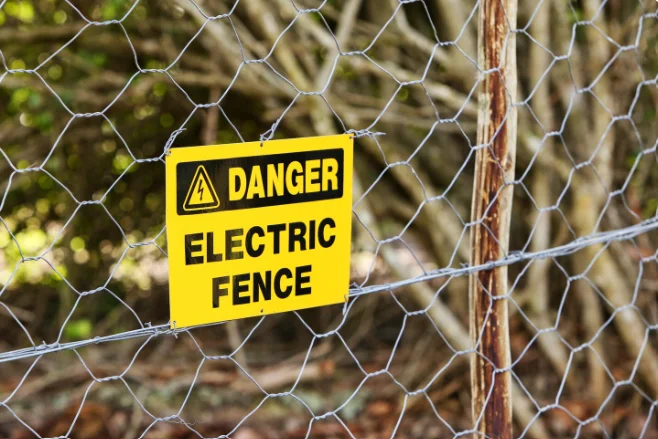When electrical equipment is exposed to extreme conditions, protection is not optional—it is essential. Industrial facilities, outdoor installations, and utility sites often face challenges such as dust, water, chemicals, and extreme temperatures. This is where NEMA Enclosure solutions come into play. They safeguard sensitive components, ensuring reliable operation even in the harshest environments.
In this article, we’ll explore what NEMA enclosures are, why they matter, the different types available, and how to choose the right solution for your application.
Understanding NEMA Enclosures
The National Electrical Manufacturers Association (NEMA) sets the standards for enclosures that protect electrical equipment. A NEMA rating defines the level of protection an enclosure offers against environmental hazards such as dust, water, ice, corrosion, or tampering.
Unlike other systems such as IP (Ingress Protection) ratings, NEMA standards also consider additional performance factors like corrosion resistance and construction quality. This makes them a trusted benchmark for industrial and outdoor electrical applications.
Why Harsh Environments Demand NEMA Enclosures
Harsh environments pose unique threats that can compromise the performance and lifespan of electrical equipment. Some common challenges include:
1. Moisture and Water Exposure
Factories, wastewater treatment plants, and marine facilities often have high humidity or direct water exposure. Without the right enclosure, electrical equipment risks short circuits, rust, and failure.
2. Dust and Particulate Matter
In mining, agriculture, and food processing, fine dust can infiltrate unprotected equipment. Dust buildup leads to overheating and malfunctioning of sensitive components.
3. Corrosive Chemicals
Industries such as chemical processing and oil refining expose equipment to acids, solvents, and vapors that corrode metal and plastic housings.
4. Extreme Temperatures
Outdoor electrical systems and manufacturing facilities often face temperature fluctuations. An enclosure must withstand both freezing cold and scorching heat.
5. Physical Impact
In construction sites and heavy industries, equipment must also resist mechanical impact, vibration, and tampering.
NEMA-rated enclosures address all these threats, ensuring durability, safety, and compliance.
Key NEMA Ratings for Harsh Environments
NEMA enclosures come in multiple ratings, each designed for specific protection levels. Below are the most common types used in challenging conditions:
NEMA 3, 3R, 3S
- Designed for outdoor use.
- Protects against rain, snow, sleet, and dust.
- Suitable for utility boxes, outdoor switchgear, and telecommunications equipment.
NEMA 4 and 4X
- Offers protection against water splashing, hose-directed water, and windblown dust.
- NEMA 4X provides additional corrosion resistance, making it ideal for marine environments and chemical plants.
NEMA 6 and 6P
- Submersible enclosures that protect equipment from temporary or prolonged water immersion.
- Common in wastewater treatment and underground electrical systems.
NEMA 12 and 13
- Designed for indoor environments.
- Protects against dust, dripping water, non-corrosive coolants, and oil.
- Widely used in manufacturing and industrial automation.
By selecting the right rating, businesses can ensure equipment longevity and safety in any operating condition.
Materials Used in NEMA Enclosures
The performance of a NEMA enclosure largely depends on the material it is made from. Different materials are chosen based on the specific challenges of the environment.
1. Stainless Steel
- High resistance to corrosion and chemicals.
- Common in food processing, pharmaceuticals, and marine applications.
2. Carbon Steel
- Strong and durable but prone to rust if not coated.
- Often used indoors or in less corrosive environments.
3. Aluminum
- Lightweight, corrosion-resistant, and suitable for outdoor use.
- Often used in transportation and telecommunication industries.
4. Polycarbonate and Fiberglass
- Lightweight and resistant to chemicals and UV rays.
- Excellent choice for outdoor applications and areas where corrosion is a concern.
Selecting the right material ensures the enclosure can withstand its environment while maintaining cost efficiency.
Applications of NEMA Enclosures in Harsh Conditions
NEMA enclosures are used across multiple industries where reliability is crucial. Some of the most common applications include:
Oil and Gas Industry
Protects control panels, monitoring devices, and electrical connections from corrosive chemicals and extreme weather.
Food and Beverage Processing
NEMA 4X stainless steel enclosures withstand frequent washdowns, ensuring hygiene and safety.
Marine and Coastal Installations
Saltwater and humidity demand corrosion-resistant enclosures such as NEMA 4X and NEMA 6P.
Mining and Agriculture
Enclosures keep out dust, dirt, and moisture, protecting sensors and motor controls.
Utilities and Telecommunications
Outdoor enclosures safeguard power distribution systems, communication lines, and network equipment from weather damage.
Factors to Consider When Choosing a NEMA Enclosure
Selecting the right NEMA enclosure requires careful evaluation of environmental and operational factors:
- Location – Indoor or outdoor usage.
- Exposure – Type of hazards present (dust, water, chemicals).
- Temperature Range – Ability to withstand freezing or high-heat conditions.
- Material – Match the enclosure material to the environment’s demands.
- Accessibility – Consider ease of installation, maintenance, and equipment access.
- Compliance – Ensure the enclosure meets industry standards and regulations.
By addressing these factors, businesses can avoid costly downtime and equipment failure.
Maintenance and Longevity of NEMA Enclosures
Even the most durable enclosures require regular inspection and maintenance. Key steps include:
- Inspect Seals and Gaskets: Check for wear and replace when necessary to maintain water and dust resistance.
- Clean Surfaces: Remove buildup of dirt, chemicals, or salt to prevent corrosion.
- Check Hardware: Tighten screws, hinges, and locks to ensure secure closure.
- Test Functionality: Verify that equipment inside operates correctly under expected conditions.
Proactive maintenance extends the lifespan of both the enclosure and the equipment it protects.
The Future of NEMA Enclosure Solutions
Advancements in technology are enhancing the design and performance of NEMA enclosures. Future solutions may include:
- Smart Monitoring: Built-in sensors to detect temperature, humidity, or intrusion.
- Lightweight Composites: New materials offering strength without excess weight.
- Improved Corrosion Resistance: Advanced coatings and finishes for longer durability.
- Customization: Tailored enclosures for unique industry needs.
These innovations will continue to expand the role of NEMA enclosures in critical industries.
Conclusion
In harsh environments, protecting electrical and electronic equipment is critical for safety, reliability, and efficiency. NEMA enclosure solutions provide a trusted defense against moisture, dust, chemicals, and temperature extremes. By understanding the different NEMA ratings, selecting the right materials, and maintaining the enclosures properly, businesses can safeguard their operations and reduce downtime.
Whether in oil fields, food processing plants, marine settings, or utility installations, NEMA-rated enclosures remain the cornerstone of reliable equipment protection. Investing in the right solution today ensures long-term resilience in even the toughest environments.









